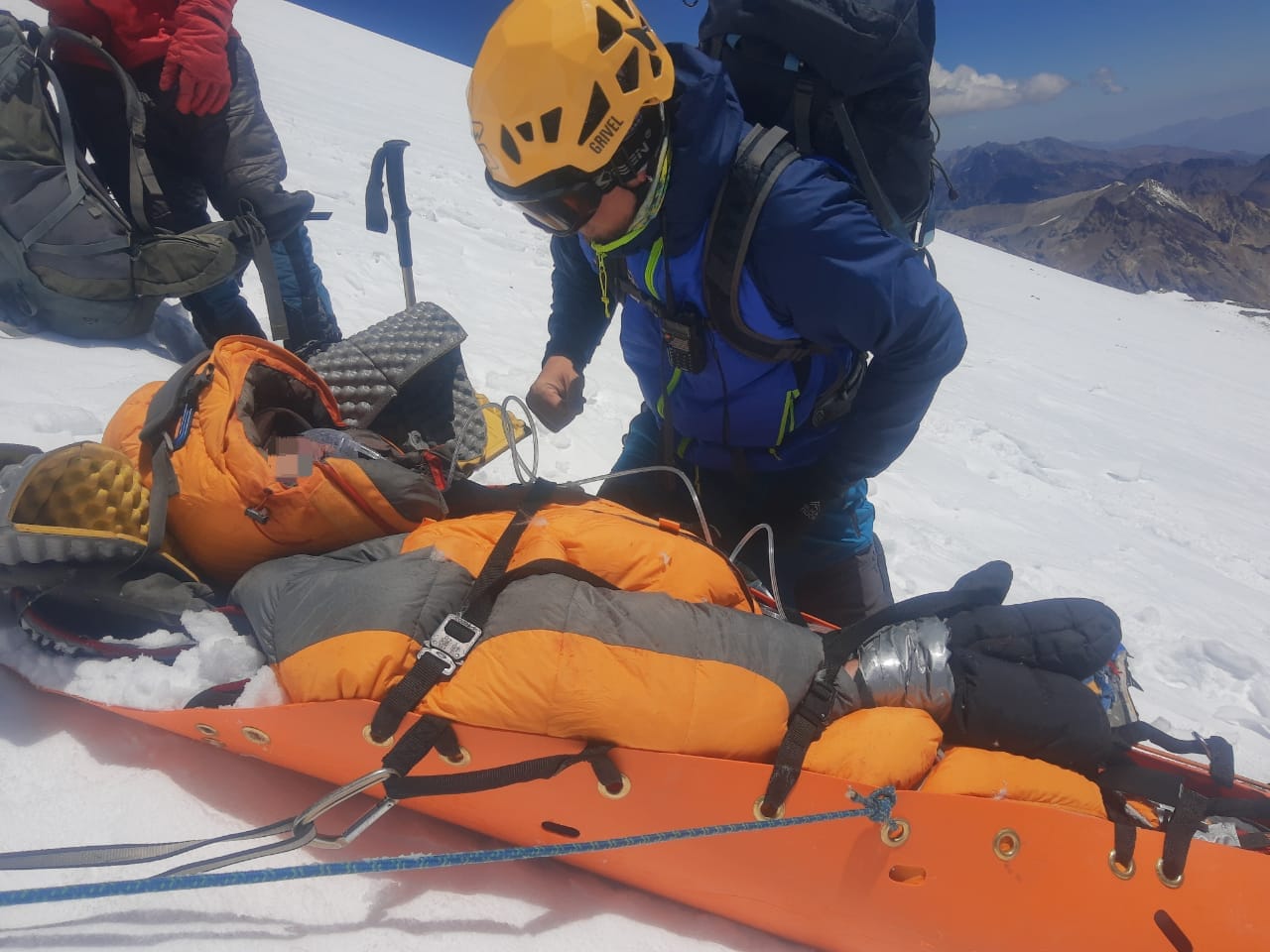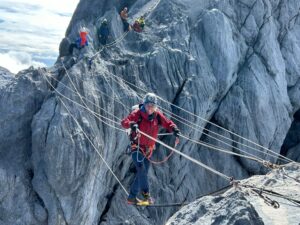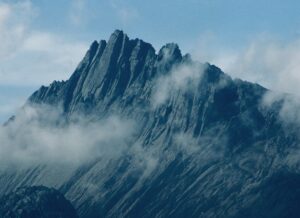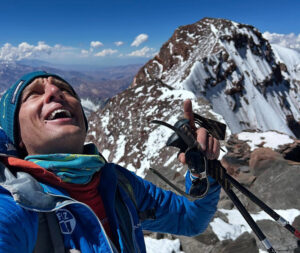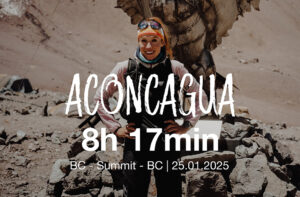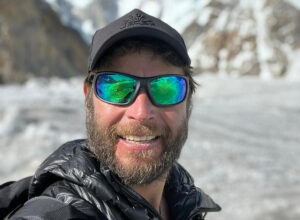Is it just me, or do more and more climbers seem to be running up and down Aconcagua?
Recent news of FKTs and expeditions lasting barely a week suggests that a new kind of visitor is flocking to this roof of the Americas. But what are the potential health risks of these speed ascents? How are the medical and rescue services coping with them?
Medical and rescue logistics have improved in the last few years, but the number of climbers has also increased. Importantly, changes in climbing style may put at risk inexperienced athletes who treat a 6,961m peak like a step machine.
We asked an Aconcagua field doctor for his perspective on these trends.
Enhanced safety
Dr. Bernabe Abramor, a physician and a climber, has worked on Aconcagua for the last 10 years. Since 2022, he has been one of the medical directors of Extreme Medicine, the official medical service of Aconcagua’s regional park. He is part of a team of over 30 doctors who take shifts during the climbing season. They care for climbers on the mountain and train doctors in high-altitude medicine.
“Right now, there are always two doctors at Confluencia (3,350m), three doctors at the canvas clinic in Plaza de Mulas (4,300m), plus other two in Plaza Argentina (4,100m),” Abramor told ExplorersWeb.
Most remarkably, he says, there is even one doctor at Camp 2 (Nido de Condores) at 5,590m. The highest medical station in the world, it surpasses even the one at Everest Base Camp (5,350m).
The doctors work with the Mendoza police, which performs the rescues, and with the park rangers. A helicopter available during the season allows quick evacuation of serious cases.
Doctors tend to sick climbers but mainly focus on prevention by running check-ups on all climbers.
“We treat up to 3,500 people per season with a wide range of ailments and check on up to 8,000 climbers,” Abramor said. “So far this season, we have looked over 5,000 people.”
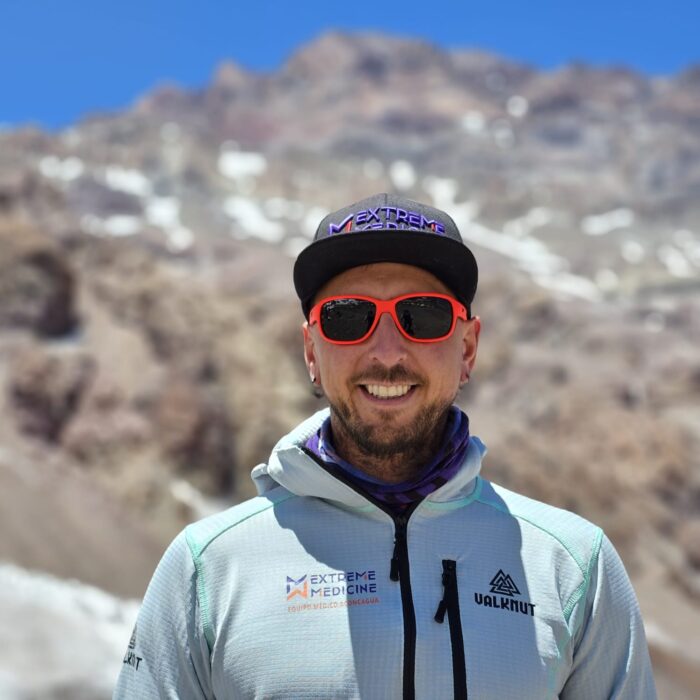
Dr. Bernabe Abramor at Acongagua Base Camp. Photo: Extreme Medicine
Increasing numbers
Abramor confirmed the number of climbers has increased significantly in the last few years, especially after the COVID lockdown in 2020 triggered a worldwide interest in the outdoors.
According to Mendoza authorities, the number of permits increased from 5,511 in 2021 to 7,267 in 2022 and 7,564 in 2023.
“There are climbers with all kinds of experience and skills, although it is true that the wider coverage of mountain-related records and social media also attract people without much experience,” Abramor said.
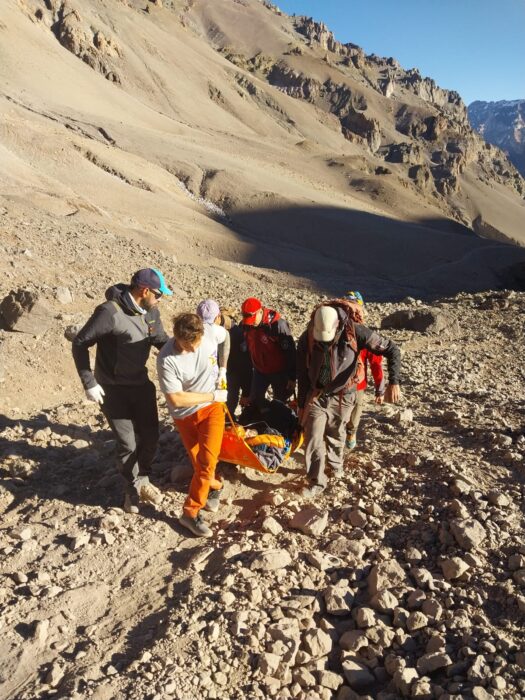
Moving a patient down the scree slopes of Aconcagua. Photo: Extreme Medicine
As for the “Code Red” cases — the most serious conditions — Dr. Abramov said the helicopter has evacuated 83 climbers this season, which lasts until early March. Most suffer from Acute Mountain Sickness (AMS), especially High Altitude Pulmonary Edema.
Abramov noted that this year, the number of incidents was quite high during the first days of the season in December, then stabilized to the levels of previous years.
Easier to dehydrate on Aconcagua
“Since Aconcagua is not an 8,000’er, many people plan very short expeditions, sometimes just five to seven days long, or without much prior experience,” Abramor said. “It is quite common to have visitors whose only experience at altitude is Kilimanjaro, but that is a completely different mountain. Besides altitude, distances here are long, and the climate is extremely dry, which favors quick dehydration.
“Unlike other mountain ranges, there are no trees or running creeks, and that impacts the physiology of acclimatization in unacclimatized visitors or those going too fast. Several climbers are surprised to develop AMS and tell us that they had previously climbed higher peaks and had no problem with altitude.”
He adds that while Aconcagua has no technical difficulties, its distinct conditions should not be underestimated.
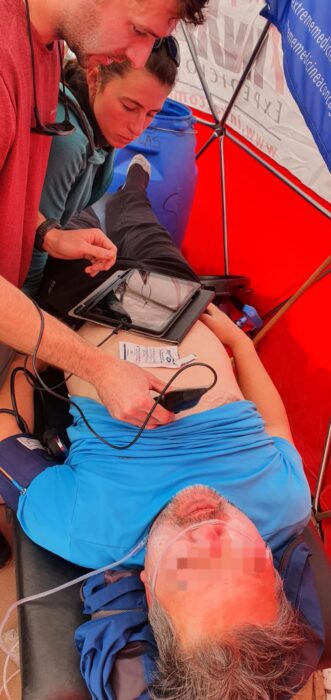
Treating a patient at Plaza de Mulas. Photo: Extreme Medicine
Classical acclimatization protocols
“A mountaineer ready to respect acclimatization protocols and spend 20 days on the mountain is less prone to develop a health condition than one trying to finish the challenge in five to seven days,” Abramor stresses.
Aconcagua permits are 21 days long, which is the recommended period for a climber without previous acclimatization to spend climbing the mountain. The classical itinerary includes a couple of days of trekking outside the park, then two to three days at 2,300m. Following this is a day trip to Plaza Francia to see the south face. Climbers then move to Plaza de Mulas for four or five nights before heading up.
The climb itself should include at least one night at each of the three high-altitude camps before the final summit attempt.
Some teams acclimatize ahead of time in the Cordon del Plata range. They overnight at 4,000m and attempt the Cerro Plata (5,968m).
However, these traditional protocols have changed completely with new techniques based on hypoxic training and with the presence of supplementary oxygen on the mountain.
Oxygen in all camps
“Express expeditions are often oxygen-supported, and the trend has been particularly common this year,” Abramor says. “Traditionally, Aconcagua was always climbed without oxygen. Until a couple of years ago…you might see three or four expeditions using bottled oxygen in a season. This year, there’s oxygen stocked everywhere in the mountain and available for climbers.”
Abramor admits that this trend has a positive side. “That availability makes our emergency work easier, as we can treat sick climbers more efficiently.”
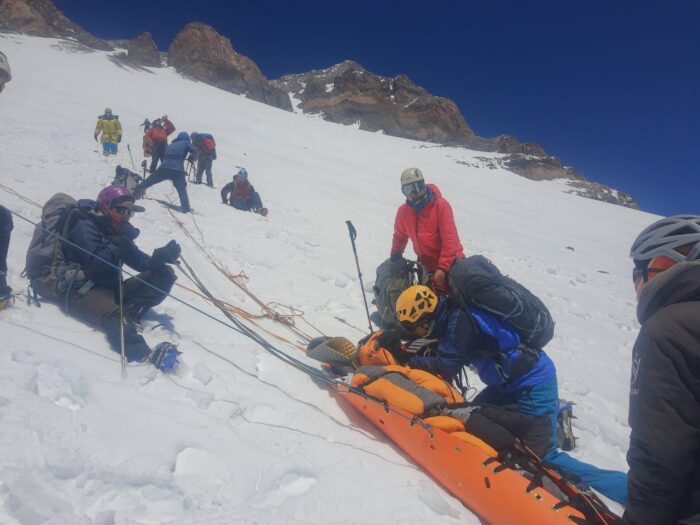
Evacuation from a higher section on Aconcagua. Photo: Extreme Medicine
Asked about the recent debate around the use of Xenon gas to enhance the body’s production of EPO, Abramor admits he has read that some climbers use the gas on Aconcagua, but his medical team is not aware of it. He does support the use of hypobaric chambers and hypoxic training, but he warns that he has seen results vary depending on the chambers used and the protocols applied.
“If well-planned, I think it is positive preparation,” he said.
However, Abramor says the best acclimatization is to climb progressively and constantly monitor how your body does.
“This is why experience is so important,” he says. “An experienced climber knows how their body adapts to altitude and will know better when something goes wrong. Of course, the use of oxygen changes everything because it avoids the hypoxic environment.”
New mountaineers
In his experience, Abramor agrees that climbers heading to Aconcagua can have vastly different profiles.
“But this is just the reflection of an international phenomenon,” he explained. “The services offered in the mountains all around the world have changed. With this, the profile of mountaineers has evolved too.
“Companies have adapted their services to those with less experience. As a result, we doctors have been forced to change [how we work] as well.”
He is referring to the dome tent at Nido de Condores, which has a doctor, oxygen, and medicines, as well as the well-equipped clinic in Plaza de Mulas.
“All this was not there a few years ago,” Abramor says. “We have reacted to the new mountaineering, the new communications, and the enhanced services for climbers, from personal guiding to gourmet catering.”
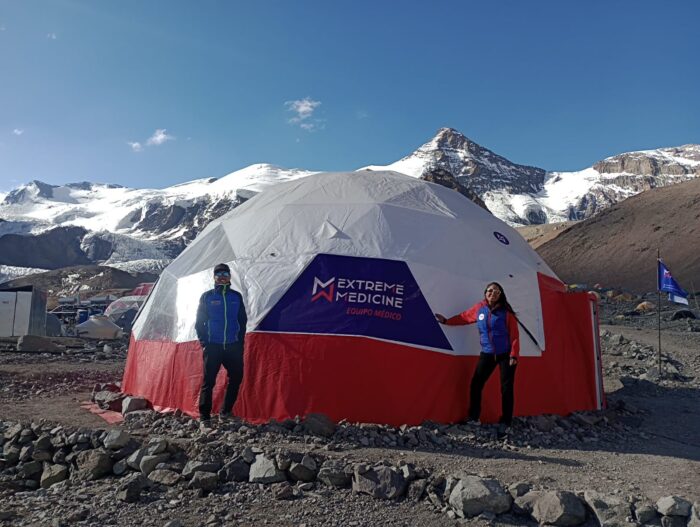
One of the dome tents on Aconcagua. Photo: Extreme Medicine
Children seeking records
Surprisingly, Abramor also mentions that the mountain medical team includes a pediatrician for the increasing number of children on the mountain.
“There are more and more children in the mountains in general and also on Aconcagua, attracted by potential records,” he says. “We have three or four kids less than 16 years old every season. This year, a four-year-old girl spent seven days in Base Camp, although she didn’t attempt a summit climb.”
Children less than 16 are only allowed to climb Aconcagua if they have received a special permit from a judge, Abramor said. Younger climbers on Aconcagua are hardly new: Tyler Armstrong of the U.S. set the record back in 2013 at the age of nine. (He reached the top with his father.)
Kaamya Karthikeyan of India set the female record in 2020 at 12 years old. Her parents passed a long legal process to obtain the permit. Mendoza tribunals were hesitant because another child (13-year-old Henry Horvath) was evacuated with AMS on a record attempt the previous year, Clarin reported.
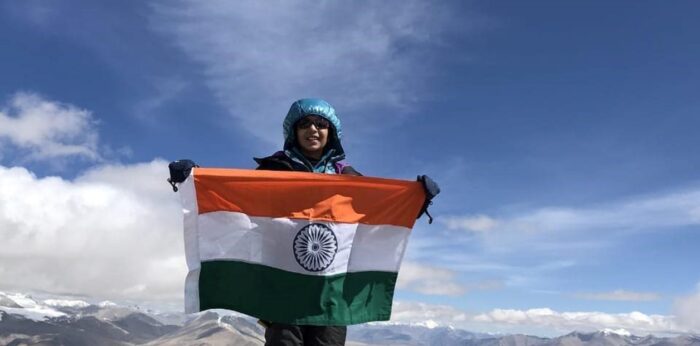
Kaamya Karthikeyan on the summit of Aconcagua, 2020. Photo: Clarin.com
